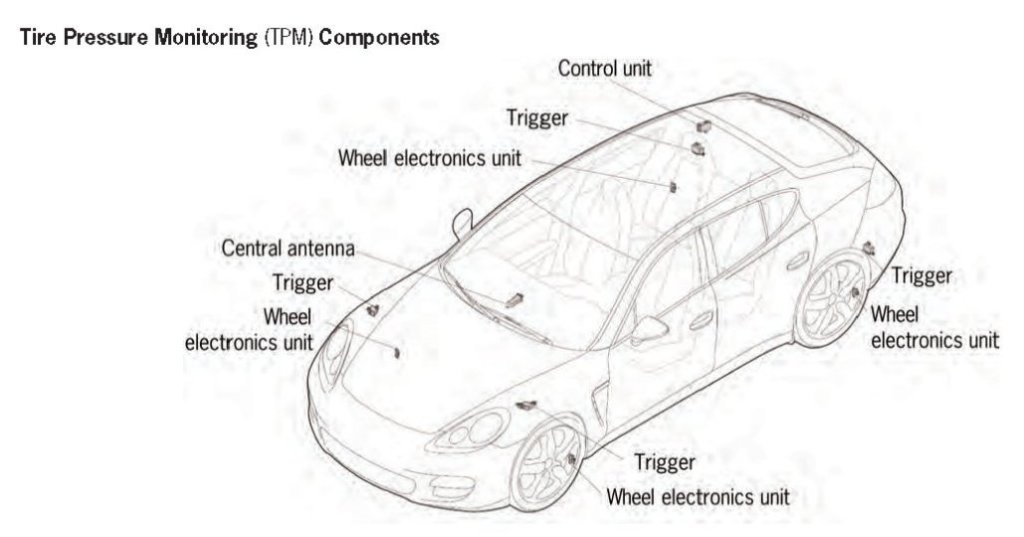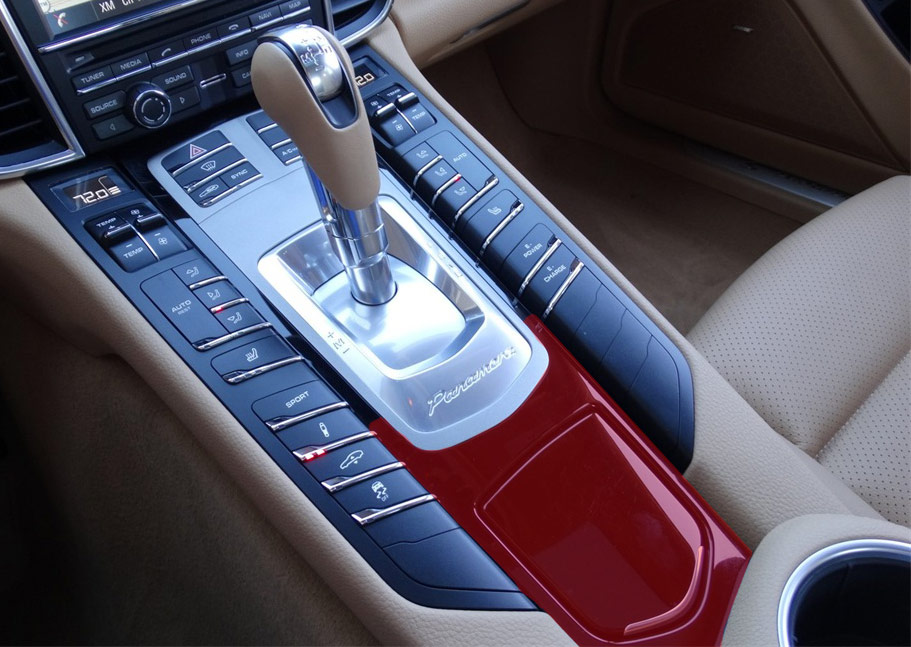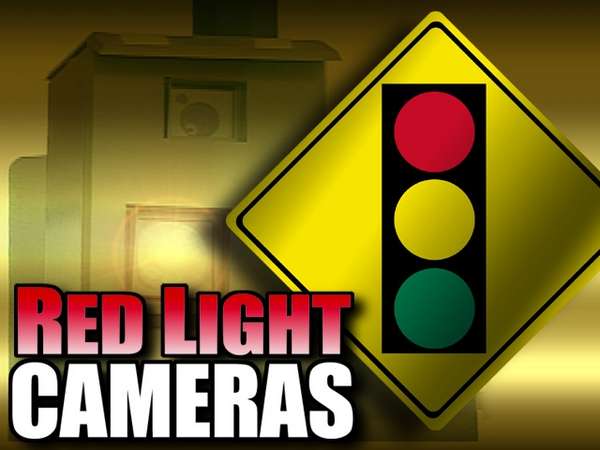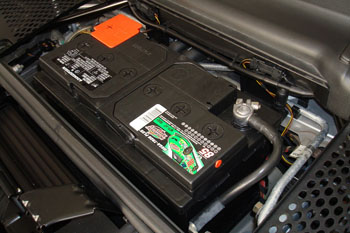Tire Pressure Monitoring (TPM)
The main function of the system is to monitor the tire pressure while driving. The tire pressure is monitored according to axle, tires, vehicle load and speed. The most important additional function offered by the system is the ability to automatically and quickly determine which wheels are mounted and their installation position. The radio telegrams from the wheel electronics units are requested by the control unit as required via the trigger senders. The system recognizes the wheels mounted on the vehicle and their installation positions by evaluating the trigger location and carrying out a statistical analysis of the information received from the wheel electronics units. The tire inflation information is displayed for the driver in the instrument cluster. The individual system components are diagnosed by the control unit.
The most important additional function offered by the TPM system in the Panamera model range is the ability to differentiate between required pressure for comfort and standard required pressure (Vmax required pressure). Another important change relates to the activation of the hard warning.
A “hard” warning in red text is only displayed:
- if the tire pressure is more than 7 psi (0.5 bar) too low for the speed range from 0 – 100 mph (0 to 160 km/h) and
- if the tire pressure is more than 6 psi (0.4 bar) too low at speeds of more than 100 mph (160 km/h).
The dynamic warning is no longer used, i.e. no warning is issued when the tire pressure starts to drop quickly within a certain time period. There is a slight time delay before the warning appears if one of the parameters mentioned above comes into effect.
Tire Pressure Monitoring (TPM) Components

Control Unit
The control unit is located at the right-hand side of the luggage compartment. The control unit analyses the incoming data from the antenna and forwards the relevant information to the instrument cluster. Since the data is transmitted via cable from the central antenna, the control unit is designed to pick up both frequencies (433/315 MHz). If a new control unit is installed, it must be coded accordingly.
Triggers (trigger senders)
The four triggers, which are located under the wheel housing liners in each of the four wheel housings, send a 125 kHz signal directly to the wheel electronics units in order to transmit the desired information to a central antenna immediately. The request to do this comes from the PSM control unit via a PWM signal.
Central Antenna
The digital central antenna (reception frequency 315 or 433 MHz) is mounted to the right side of the vehicle floor. The signals received from the wheel electronics units are digitalized in the antenna and forwarded to the control unit via two lines (LIN bus – Local Interconnect Network).
Wheel Electronics Unit
The wheel electronics unit comprises the following components: Pressure sensor, temperature sensor, roll switch, measuring and control electronics, receiver and transmitter as well as a battery.
NOTE: A complete description of the TPM system can be found in the Service Information Technik for the Boxster and Cayman, model year 2009.














